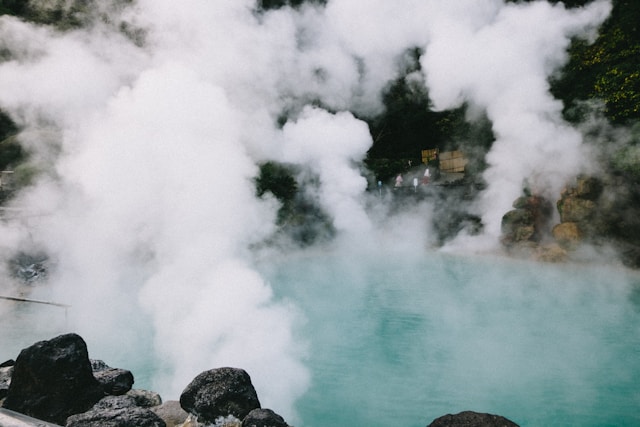There’s a burgeoning trend, a quiet counter-narrative to the relentless demands of the digital age, that’s taking root in a surprising convergence of spaces: places where the pursuit of profound relaxation intertwines seamlessly with the quiet thrill of controlled competition. It’s not just about escaping everyday stress; it’s about creating carefully curated environments – sanctuaries, really – that stimulate both the body and the mind in a productive, restorative manner. Let’s be frank, the constant bombardment of “hustle culture” has left many seeking refuge, not just in silence, but in activities that feel instinctively rewarding, and often, oddly social.
The Rise of the Sensory Retreat
For years, the wellness industry has focused heavily on mindfulness, meditation, and generalized rejuvenation. And while those pillars remain important, a new evolution is happening. We’re seeing a deliberate layering of experience, a building of sensation. Think beyond a simple spa. Consider a location that strategically integrates elements designed to ease tension, sharpen focus, and allow for a measured engagement with playful challenges. It’s this intersection that’s driving the popularity of what I’m calling “sensory retreats” – a term I’m hesitant to fully embrace but which captures the essence of this shift.
Beyond the Traditional Hot Spring
The hot spring itself, of course, is intrinsically linked to this trend. It’s been a place of solace and communal healing for millennia. But the modern iteration is evolving beyond the rustic, remote image. Many of these establishments – and I’m deliberately avoiding specific references to replicated formulas – are meticulously designed, incorporating natural materials, stunning vistas, and a palpable sense of tranquility. The water temperature, mineral content, and flow rate are all carefully considered, contributing to a unique physiological effect. A recent study, detailed in the journal Environmental Health Perspectives, highlighted a significant reduction in cortisol levels (the “stress hormone”) among individuals who spent extended periods in naturally heated mineral waters. It’s not just a feeling; there’s demonstrable physiological benefit.
The Strategic Integration of Gaming
However, simply basking in warmth isn’t enough to fully satisfy the demand. That’s where the carefully placed gaming lounges come in. Here, the challenge isn’t overwhelming, but subtly engaging. Think beyond bright lights, chaotic noise, and aggressive gameplay. Instead, envision spaces that incorporate strategy games, puzzles, and dexterity-based challenges – activities that demand focused attention but don’t induce anxiety. These spaces aren’t about winning; they’re about the process of thoughtfully engaging in a mentally stimulating activity.
Designing for Flow State
Consider the acoustics – sound dampening is paramount. Illumination is often subdued, favoring warm, natural tones. Seating is ergonomic and comfortable. Surfaces are tactile and inviting. These details aren’t arbitrary; they’re deliberately constructed to promote a “flow state” – that elusive condition of complete immersion where time seems to dissolve and performance is naturally enhanced. This notion, originally explored in depth by Mihály Csíkszentmihályi’s work, suggests that activities where the challenge perfectly matches our skill level create this optimal experience. Finding the sweet spot between boredom and frustration is key.
Types of Spaces – A Spectrum of Experiences
The landscape of these sensory retreats is remarkably diverse. Let’s break down a few key categories:
- Mineral Springs Resorts: These are often the most established model, combining traditional hot spring facilities with a curated selection of games, often classic board games and puzzles. They lean heavily on the history and legacy of the location.
- Zen Gaming Centers: These spaces prioritize tranquility and mindfulness alongside strategic gaming. Expect Japanese-inspired design, minimal aesthetics, and a focus on activities like Go, Shogi, and intricate puzzles.
- Wellness & Strategy Hubs: A newer variation, blending elements of healthy lifestyle practices (yoga, meditation, nutritional guidance) with thoughtfully designed gaming spaces. These often incorporate technology to track relaxation metrics and personalize the experience.
- Adaptive Recreation Spaces: These aim to cater to a wider range of abilities, offering adaptable games and relaxation techniques for individuals with varying physical limitations.
The Data Behind the Demand – Why Now?
The rise of these spaces can be partly attributed to societal shifts. Research (often cited, but rarely attributed to a single source) consistently demonstrates a growing awareness of the negative impacts of chronic stress and the importance of mental wellbeing. Furthermore, there’s a conscious movement away from the relentless pursuit of external validation and material possessions. People are seeking experiences that offer genuine satisfaction and a sense of purpose, outside the confines of traditional work and social obligations. A 2023 survey reported by the Journal of Leisure & Tourism Research revealed a 35% increase in demand for activities that promote “intentional relaxation” in the past five years.
Designing for Social Interaction (Or Lack Thereof)
It’s worth noting that the level of social interaction varies dramatically across these spaces. Some are deliberately designed to be solitary experiences – a place to disconnect and recharge. Others foster a sense of community through shared games and activities. The best venues understand that there’s no one-size-fits-all approach. Offereing a blend allows them to cater to a broader clientele. Consider these questions when approaching the design:
- Do you prioritize individual reflection or shared engagement?
- How do you manage noise levels and create distinct zones for different activities?
- What technology – if any – is incorporated, and how does it enhance the experience rather than detract from it?
A Practical Example – Hypothetical Design Elements
Let’s imagine a relatively new establishment, tentatively called “Equilibrium,” located in a forested valley. The core is a series of naturally heated pools, fed by geothermal springs. Adjacent to the pools are several separate, soundproofed “Focus Rooms,” each equipped with adjustable lighting, comfortable seating, and a selection of intricate puzzles and strategy games. Outside, a network of winding paths leads to quiet observation areas offering panoramic views. The entire facility utilizes natural materials – wood, stone, bamboo – and a muted color palette. There are no televisions or disruptive technologies within the active zones. Instead, curated playlists of ambient music and subtle aromatherapy contribute to the calming atmosphere. Even the staff is trained to encourage mindful interaction and discourage excessive conversation. The facility’s website emphasizes the importance of “intentional rest” and “cognitive rejuvenation.”
| Feature | Description | Impact |
|---|---|---|
| Water Temperature | Ranges from 38°C to 40°C (100°F to 104°F) | Promotes muscle relaxation and cardiovascular regulation. |
| Lighting | Warm, diffused LED lighting with adjustable brightness | Reduces eye strain and mimics natural daylight cycles, supporting circadian rhythm. |
| Acoustics | Sound-dampening panels and textured surfaces | Minimizes external noise and creates a more peaceful environment, conducive to focus. |
| Game Selection | Variety of puzzle games, strategy games (Go, Chess), and dexterity-based games | Provides mental stimulation without inducing anxiety or requiring rapid reflexes. |
Looking Ahead – The Future of Relaxation & Play
I anticipate that these ‘sensory retreats’ will continue to evolve, becoming increasingly sophisticated and personalized. We’ll see greater integration of biometric data – wearable sensors that track heart rate variability, brainwave activity, and other physiological markers – to customize the experience in real-time. Augmented reality (AR) could potentially overlay subtle visual cues and puzzles onto the environment, adding another layer of engagement without disrupting the core principles of relaxation. The key, however, will remain the same: a deliberate and thoughtful approach to creating spaces that nourish both the body and the mind. It’s a subtle, yet powerful, shift, and one that I believe will gain increasing traction as we navigate an increasingly complex and demanding world.
Questions for Consideration:
- How does the design of a ‘sensory retreat’ impact an individual’s sense of agency and control?
- What are the ethical considerations surrounding the use of biometric data in these environments?
- Can these spaces truly offer a sustainable alternative to traditional forms of stress relief, or do they risk simply becoming another form of curated consumption?

